The Food Canning Industry Was Revolutionized In 1920, When The Continuous Rotary Pressure Sterilizer Was Introduced By Albert R. Thompson. Thompson Was Chief Engineer For The Anderson-Barngrover Co. Of San Jose, California, Now The FMC Corporation. The Sterilizer Cooked Canned Products Uniformly Under Pressure For Short Period At High Temperatures, Then Quickly Cooled Them Under Pressure To Prevent Swelling Or Bursting. It Operated Continuously At Speeds Of Up To 400 Cans Per Minute.
USA
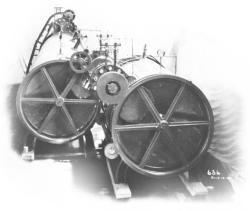

George Stockton Berry (1847-1917) of Lindsay, Tulare County, California designed, built, and in 1886, operated the first self-propelled combine. He was granted a U.S. Patent (# 374,339) in1887. The Berry design embodied the following "firsts":

The First Successful Row Crop Tractor Invented by Bert R. Benjamin (ASAE Member) was Operated and Tested on this Farm in 1923. Increased Row Crop Clearance and Overall Versatility Extending the Use of the Tractor to Cultivating, Accelerated the Conversion from Animal Power to Machine and Marked a New Era in American Agricultural Efficiency and Productivity. Dedicated by The American Society of Agricultural Engineers 1980

Designated an Historic Landmark in Honor of J. Brownlee Davidson a Founder of Agricultural Engineering First President of American Society of Agricultural Engineers Organizer of the First Professional Agricultural Engineering Curriculum July 1905 by American Society of Agricultural Engineers

Charles C. Fenno Of Grinnell, Ia, Patented The First Field Corn Silage Harvester On April 19, 1892. His Ground-Powered Machine Cut The Corn Plant And Fed The Tassel End First To A Rotary Cutter. Joseph Weigel Of Flandreau, Sd, Improved Fenno's Harvester In 1912 By Adding An Engine To Power The Cutter And By Feeding The Stalks Butt End First. Andrean And Adolph Ronning, Farmers Of Boyd, Mn Patented Further Improvements In 1915. In 1918 The American Harvester Co. Of Minneapolis, Mn, Began Manufacturing The Horse-Drawn Ronning Harvester Using Weigel's Patent Too.
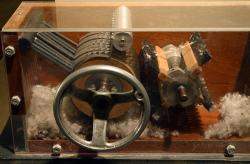
This Creative Development Which Was Responsible For The Survival Of The Cotton Industry In The United States Occurred In General Nathaniel Greene's Plantation Near Savannah 10 Miles Northeast Of This Marker. Separation By Hand Labor Of The Lint From The Seed Of The Desired Upland Variety Of Cotton Produced Only One Pound Per Day Per Person. Eli Whitney, A Native Of Massachusetts And Yale Law Graduate, Came To Georgia To Teach School In Late 1792, At Age 27. Mrs. Catherine Greene, Widow Of General Greene, Invited Whitney To Her Plantation, And Urged Him To Design A Cotton Gin.

Farm And Residence of John Johnston 1791 - 1880 Eminent Farmer Who Here Originated Tile Underdrainage in America in 1835 and Thereby Became an Outstanding Contributor to Human Welfare Honored by The American Society of Agricultural Engineers 1935. Erected by State Education Department

Established in 1907, the American Society of Agricultural Engineers (ASAE) was managed by volunteers. In 1925, local editor Raymond Olney was named secretary, thus establishing ASAE in this area. By 1969, with over 7,000 members in 100 countries, an ASAE building was constructed at this site in St. Joseph, Mi. In 2005, ASAE became ASABE to recognize the importance of biology in the profession. ASABE collects and maintains the unique body of knowledge for the agricultural/biological engineering profession.

Designated an Historic Landmark of Agricultural Engineering. In the Shelbyville Area During the Spring of 1929, Raymore McDonald Designed and Developed the First Commercial Pick-Up Baler as Conceived and Financed by Horace Tallman and His Sons, Leslie R. and Gentry L. These Balers were Marketed for Many Years by the Ann Arbor Machine Company of Shelbyville. This Concept of Field Processing of Farm Forages Made a Significant Contribution to the Efficiency and Economy of Mechanized Forage Harvesting in the World's Agriculture.

In 1932, J. O. Smith, Agricultural Engineer at Delta Branch Experiment Station in Stoneville, MS, attached a small anhydrous ammonia cylinder to a plow in such a manner that the NH3 was released in the soil. The plow, a Georgia Stock, was pulled by a gray mule named Ike. This was the first known use of anhydrous ammonia as a soil-applied crop fertilizer. The crude apparatus and the anhydrous ammonia it applied provided a much needed source of nitrogen for the otherwise rich alluvial soils of the Mississippi Delta.

Built by the Bay City Dredge Works of Bay City, Michigan, this dredge was used to construct a portion of US 41 called the Tamiami Trail, which connected Tampa with Miami through the Everglades and Big Cypress Swamp. The last remaining display of walking dredges (of some 145 walking machines), it…
Read More
The longest steel-arch bridge in the world for 46 years, the Bayonne Bridge continues to be celebrated today as a major aesthetic and technical achievement. The 1,675-foot bridge replaced a ferry service which until then was the only means of crossing from the Bayonne peninsula to Staten Island…
Read More
Montogomery Bell was a land developer and iron maker who purchased the Harpeth Narrows site to expand his industrial empire - which ultimately consisted of 14 iron blast furnaces throughout middle Tennessee.
The Harpeth River makes a tight bend around a steep limestone ridge, losing 17…
Read More

Belle Fourche, meaning "Beautiful Forks" in French, refers to the confluence of the Redwater and Belle Fourche Rivers. The gold rush to the Black Hills in 1876 brought many people to the area, but agriculture and livestock soon became the principal industries. Farmers and civic leaders…
Read More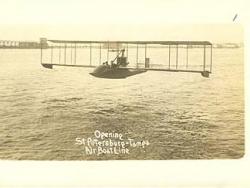
The St. Petersburg Yacht Basin was the original operating location of the St. Petersburg – Tampa Airboat Line, the nation’s first, regularly-scheduled commercial airline. The line’s inaugural flight was on January 1, 1914, with two daily, round-trip flights between St. Petersburg, Fla., and…
Read More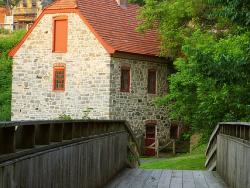
The first known pumping system providing drinking and wash water in the North American colonies. The building (still standing) is dated 1761, but it was preceded by an experimental frame building dated 1754. Before the Bethlehem built its system, assigned carriers would daily haul water up the…
Read More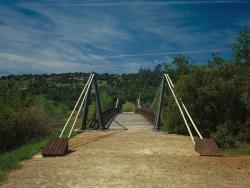
Soon after gold was discovered at Sutter's Mill near Sacramento in 1848, General John Bidwell found gold near the Middle Fork of the Feather River. His discovery brought hordes of miners to the scene and Bidwell Bar was born. The Bidwell Bar Suspension Bridge over the Feather River was one of…
Read More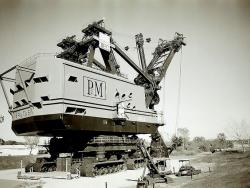
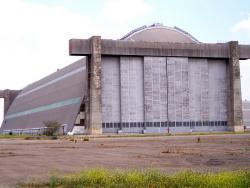
All building materials were made fire-resistant to protect against incendiary bombing. Treatment involved a vacuum process of salt impregnation. During construction, high winds caused a partial collapse of some members. The ruined materials were piled for incineration, but would not burn; so the…
Read More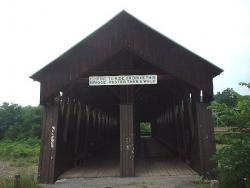
Nicholas Montgomery Powers built the bridge. It was first constructed behind the village, then taken apart and reassembled over the stream. Some residents questioned the idea of re-constructing it, but Powers was so confident of the bridge's durability that he sat on the roof when the final…
Read More

By the 1890s, the transportation infrastructure of downtown Boston - a maze of narrow, winding streets laid out, in some cases, along Colonial cow paths - proved completely inadequate for the needs of a modern, bustling metropolis. Tremont Street, the city's main thoroughfare, was regularly…
Read More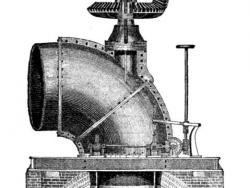


A product of the Northern California Gold Rush, the Bridgeport Covered Bridge is believed to be the longest, single-span, wooden covered bridge in the United States. Crossing the south fork of the Yuba River at a span of 233 feet, the bridge was built by the Virginia City Turnpike Company as…
Read More
On May 24, 1883, with schools and businesses closed for the occasion, New York celebrated the opening of the Brooklyn Bridge. Also known as the Great East River Bridge, it was built over 14 years in the face of enormous difficulties. Deaths, fire in the Brooklyn caisson, and a scandal over…
Read More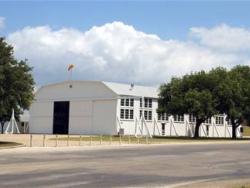
In its infancy, Hangar Nine housed Curtiss JN-4s ("Jennys") like the one Charles Lindbergh landed there when he reported for duty as a flying cadet in 1924.
As the U.S. was preparing to enter World War I, the Army raced to build an entire airfield, complete with 16 wooden hangars,…
Read More


